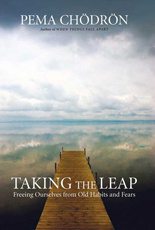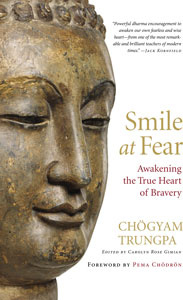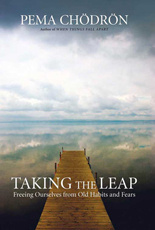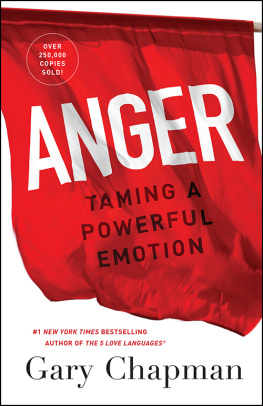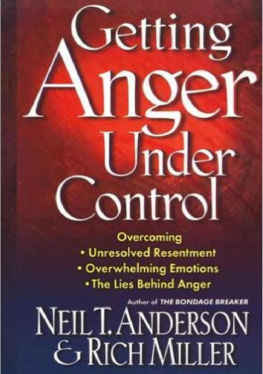
W ORKING WITH A NGER
by
Thubten Chodron
Snow Lion Publications
Ithaca, New York
Snow Lion Publications
605 West State Street
P.O. Box 6483
Ithaca, NY 14851 USA
(607) 273-8519
www.snowlionpub.com
Copyright 2001 Thubten Chodron
All rights reserved. No portion of this book may be reproduced by any means without the prior written permission of the publisher.
Printed in Canada
ISBN 10: 1-55939-163-4
ISBN 13: 978-1-55939-163-4
Library of Congress Cataloging-in-Publication Data
Thubten Chodron, 1950
Working with anger / by Thubten Chodron.
p.cm.
Includes bibliographical references.
ISBN 1-55939-163-4 (alk. paper)
1. AngerReligious aspectsBuddhism. 2. PatienceReligious aspectsBuddhism. 3. CompassionReligious aspectsBuddhism. 4. Religious lifeBuddhism. 5. BuddhismDoctrines. I. Title.
BQ4430.A53 T48 2001
294.35698dc21
2001004851
Also by Thubten Chodron:
Blossoms of the Dharma: Living as a Buddhist Nun (North Atlantic Books, Berkeley, CA)
Buddhism for Beginners (Snow Lion Publications, Ithaca, NY)
Choosing Simplicity, by Venerable Master Wu Yen (ed. by Thubten Chodron) (Snow Lion Publications, Ithaca, NY)
Interfaith Insights (Timeless Books, New Delhi)
Open Heart, Clear Mind (Snow Lion Publications, Ithaca, NY)
Taming the Monkey Mind (Heian International, Torrance, CA)
Transforming the Heart: The Buddhist Way to Joy and Courage, by Geshe Jampa Tegchok (ed. by Thubten Chodron) (Snow Lion Publications, Ithaca, NY)
PREFACE
Anger plagues all of us on a personal, national, and international level. When it manifests in the mind of even one person, let alone a group or nation, the entire world can be affectedwitness the two world wars of the last century. On a personal level, anger can destroy our relationships with the people we value the most and keep our mind bound in spirals of misery. Within groups, anger splits people into factions and sets people striving for a common beneficial aim at cross-purposes to each other. In the international arena, anger fuels the conflicts in the Middle East, the Balkans, and elsewhere.
As powerful as anger is, it lacks any material substance whatsoever. Nevertheless, it can drastically affect our lives and the lives of others. When we look into our own minds and hearts and understand this disturbing emotion better, we will recognize its unrealistic projections and thus will not buy into its story so readily. We will gradually be able to distance ourselves from this painful emotion, without suppressing, repressing, or expressing it. We will replace it with more wholesome and beneficial states of mind, and in this way, patience, tolerance, love, and compassion will grow within us. Learning the techniques for doing this is the purpose of this book.
Working With Anger is written for everyone, because no matter what our education, socio-economic class, gender, race, or religion, we risk falling prey to angers clutches. Written in informal, friendly language, this book includes numerous examples of daily life situations in which these teachings may be applied. Some of the examples were told to me by friends, family, and students, while others are from my own life.
Overview
Chapter one sets the stage by introducing the Buddhist view of mind, emotions, and anger. From there, we will define anger and discuss its disadvantages in chapter two. Chapter three speaks of patiencethe antidote to angerthe ability to remain calm in confront of harm and suffering. The fourth chapter considers remaining doubts we may have of the benefits of subduing anger and developing patience, while the fifth discusses repressed anger and factors prompting the arisal of anger in our mind.
Chapter six begins the description of techniques to counteract anger, and chapter seven continues this by illustrating creative ways to handle the hurt and anger that arise when we are criticized. Chapter eight shows us how to avoid blaming ourselves or others for our problems and have a broader perspective. It also deals with the anger that arises due to being physically ill. Each of us has buttonssensitive points and issueswhich, when accidentally or intentionally pushed, throw us into a tizzy. How to work with these situations is considered in the ninth chapter.
Accepting the present reality of situationsyet working to improve the futureis a powerful antidote to anger and the topic of chapter ten, while chapter eleven identifies our self-centeredness as our real enemy and describes the unusual techniques of giving our suffering to our self-centeredness and seeing the kindness of the person who harms us. Grudges and resentment can weigh on us as we collect them over the years. Letting go of these so that we can go through life with a happy heart is the topic of chapter twelve. The thirteenth chapter deals with the painful issue of the betrayal of trust, while the fourteenth gives us ways to handle the snake of envy.
Sometimes our anger focuses not on others, but on ourselves, and we become caught in chains of guilt and self-blame. Letting go of these is the topic of chapter fifteen. Cultivating love and compassion enables us to prevent anger from arising, and gaining wisdom eliminates it from the root. These topics are discussed in chapters sixteen and seventeen respectively.
While most of this book deals with how to handle our inner emotion of anger, appendix one discusses external behaviorsvarious conflict stylesand with which motivations and in which circumstances they can be employed. A glossary and a list of recommended reading are also included at the end of the book for your use.
My wish is that this book contributes to harmony in our worldthe harmony that each of us longs for in our own hearts and the harmony that we wish to create among each other in societies. I believe that it is not survival of the fittest that enables a species to continue to exist, but survival of the compassionate. My teacher, His Holiness the Dalai Lama, often points out that ants and bees cooperate much more with each other than we supposedly more intelligent human beings. On its own, an ant would perish, but caring about and cooperating with others, it lives and prospers.
When our minds are joyful and free from anger and resentment, we work and share with others to the advantage of all, while when we are miserable and angry, we sabotage others good work as well as our own. This is very clear when we think about it: No one wakes up in the morning and says, I feel so happy today. I think Ill go out and hurt someone! We only harm others when we are tormented by anger. Being the interdependent creatures that we are, our destructive behavior triggers the same in others. Thus, the way to stop the cycle of suffering depends on each of us working with our own anger in constructive ways and cultivating our compassionate heart that wishes others well.
Working with Anger is based on teachings of the Buddha, the wise, compassionate teacher who lived in India in the sixth century BCE. In subsequent centuries, great Indian sages commented on the Buddhas teachings, as did practitioners in each country to which Buddhism spread. Due to the kindness of my teachers, I have heard these instructions and now have the opportunity to share them with you. Through putting them into practice, we will experience the benefits.
All errors in this presentation are my own.
The Origins of this Book
As a Buddhist nun and teacher, I am often asked to give talks on working with anger. The beginnings of this book were based on two talks I gave on this subjectone at Evergreen Buddhist Association in Kirkland, Washington, in 1989, and the other at a Buddhism and Psychology Conference at the University of Washington in Seattle, in 1992. Based on these, a booklet entitled Working with Anger was published for free distribution by Amitabha Buddhist Centre in Singapore. Because people were enthusiastic about this topic, that booklet was enlarged and made into this book.


